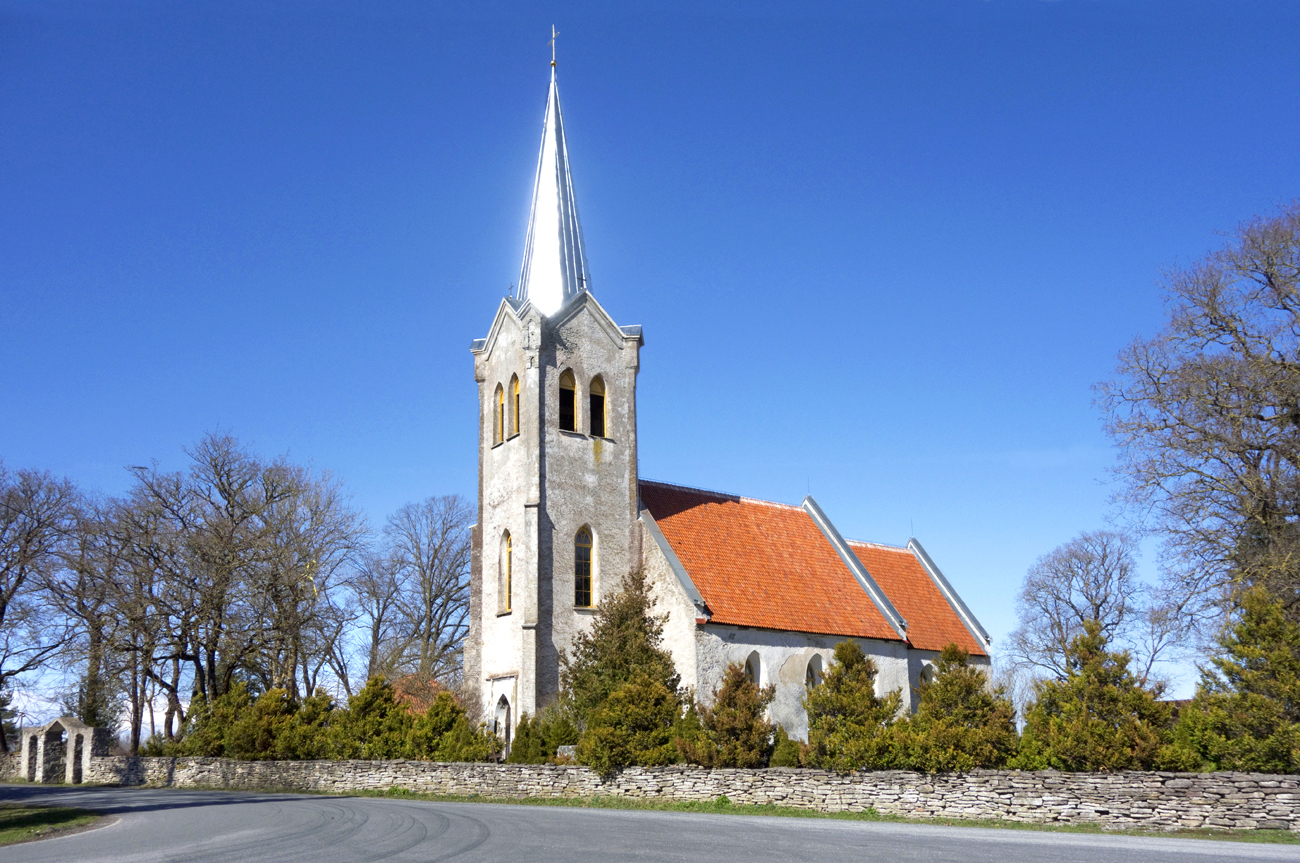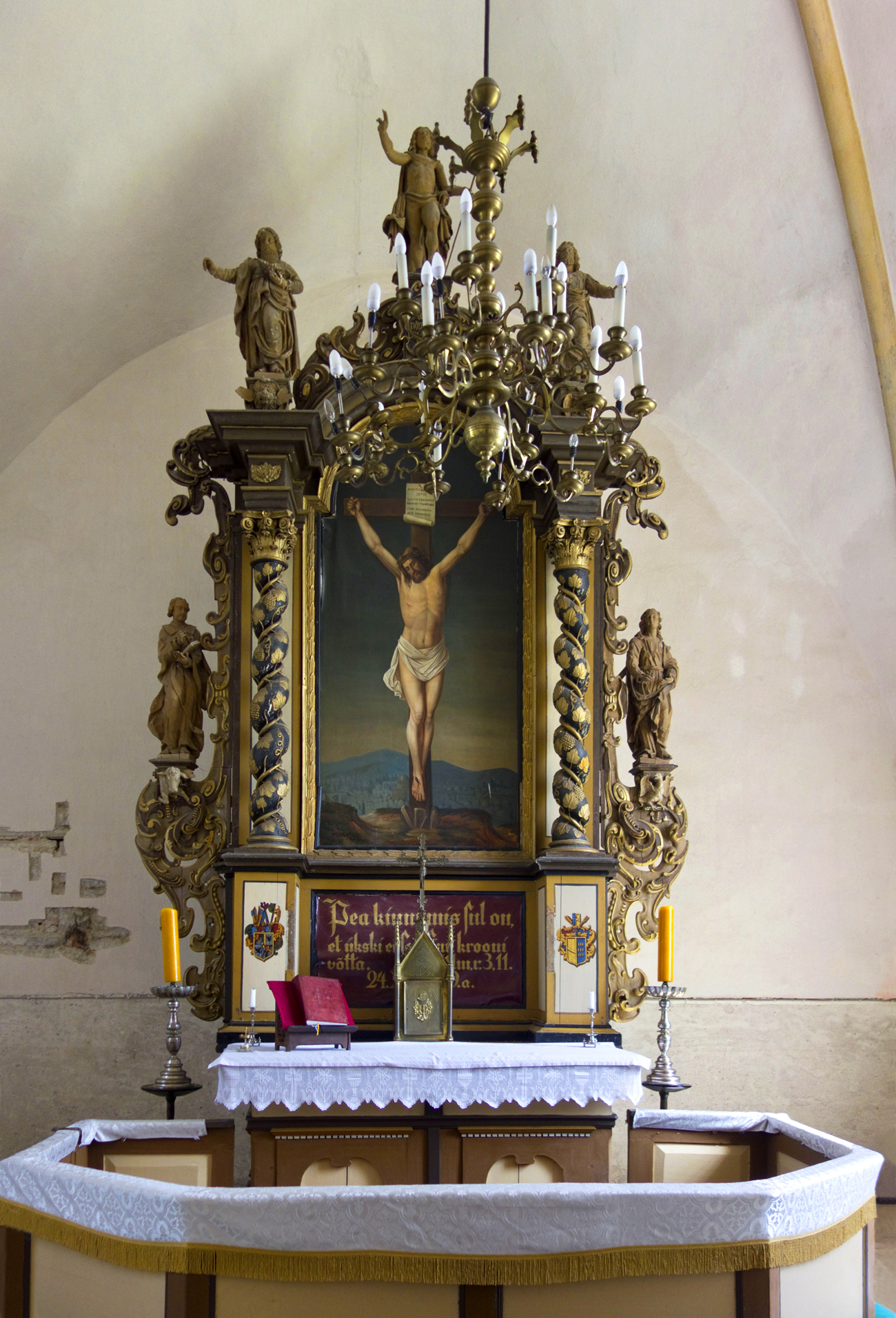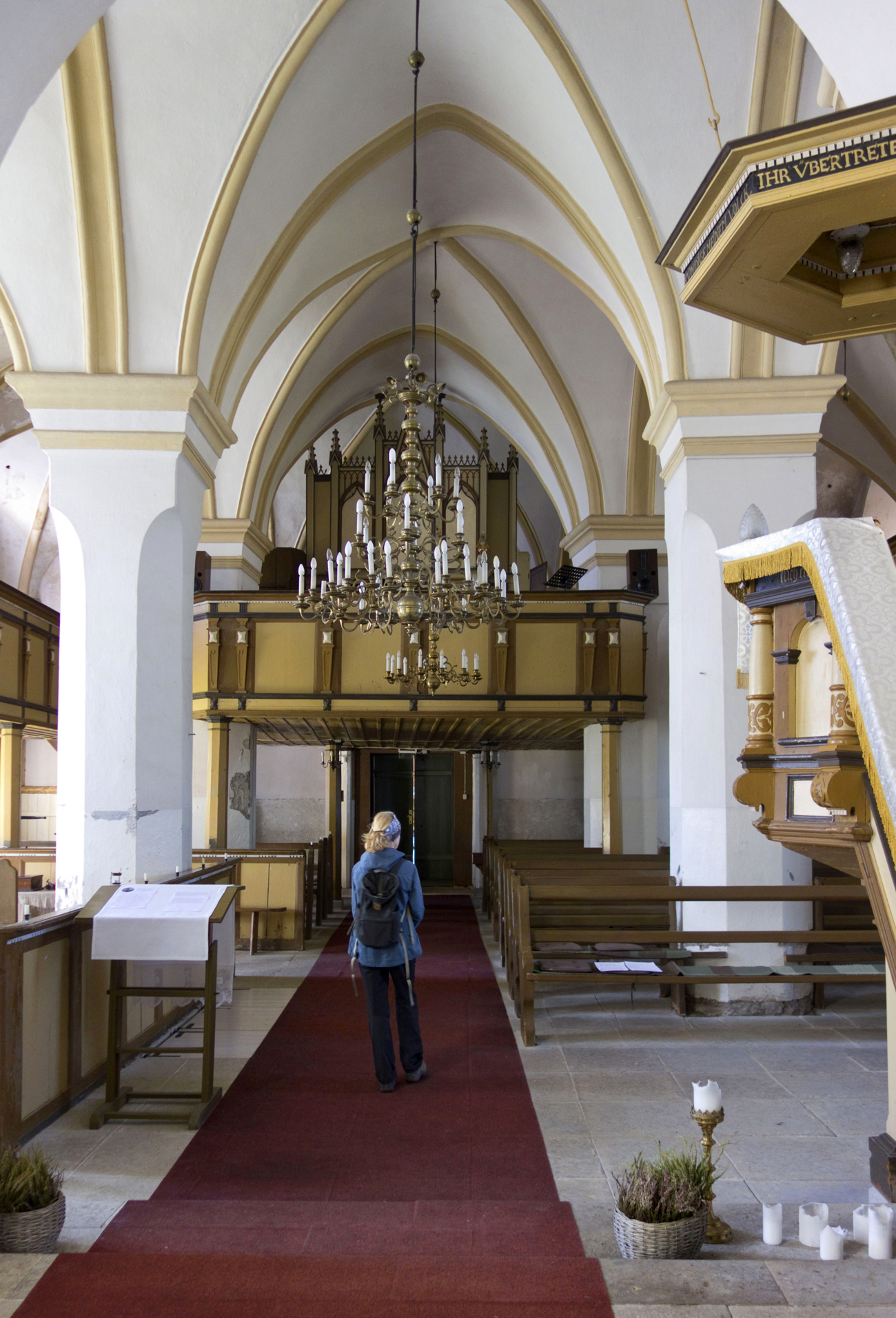Jõelähtme Church

Jõelähtme Church, similarly to our native land, is dedicated to Virgin Mary, the Mother of Jesus. The church was probably consecrated on 15 August or, on the Assumption Day, in early 1220 and so Virgin Mary became the protector and intercessor for the local people. Mary’s reminders can be seen everywhere, especially in plant names. Some beautiful wild orchids are called the herbs (remedies) of the footprint of the Mother of Jesus; Mary’s alder (agrimony) was considered to be a powerful healer, and Mary’s grass (holy grass) was said to have magical properties which helped to acquire the ability to understand the language of birds and animals. In 1417 the construction of the Pirita Monastery in Mary’s Valley in the Jõelähtme Parish was begun.
In Estonian the word „kirik” denotes a building, a place of worship, but in Greek it means belonging, or pertaining to Kyrios, the Lord. Thus it denotes the link between man and God, who is the caller. This link between man and God may take a monumental form, which is the house of worship or the church building. However, the Lord and the human being are the centre of church. Thus we can look at the edifice of the church as a kind of monument. It stands to all those whom God has called to Himself over the centuries and who have filled their time and space with good works. It is now nearly 800 years that such people have existed, although we do not remember or know most of them.


Heinrich Christopher Wrede wrote in the chronicle of Jõelähtme Church: „At an early hour on New Year’s Day in 1729 I preached here, in Jõelähtme Church where the congregation had earlier gathered. The service started at 6 in the morning. I had told them from the pulpit to hang up the chandeliers and fix the sconces to the walls and have the congregation bring the candles. The people were very glad that they could have a candlelight service in Jõelähtme Church at such an early hour and said that they had never before experienced anything of the kind.”
The pastor Wrede wrote in the chonicle how astonished he had been that „no school has existed here in earlier times and I cannot understand how the beloved ancestors could imagine that church without a school was of any benefit”. Wrede strongly believed in church-school partnership. But what Wrede did not know was that the first school was opened at Jõelähtme already in 1687. And the first teacher in that school had been Marten, a pupil of Forselius. The school had used the rooms in the parsonage.
In 1736 Herman Bohn brought teachers to villages in the Maardu and Jägala manors who taught reading and prayer to children in the winter. About 200 children from eleven villages were educated in 1736. In 1746 the widow of General Bohn gave one thousand and ninety one copies of the Estonian-language Bible to Jõelähtme Church on condition that money from the sale of the Bibles should be used for paying a salary to the schoolmaster and for supplying the poor with textbooks free of charge.
A great role in the education of Jõelähtme Parish was played by Paul Loppenowe (1826–1901). He came to Jõelähtme in 1863 and founded a public school for peasant children. A bit later the shools were also opened in Maardu, Randvere and Jägala, and then in Kostivere (1867) and Saha (1868). Loppenowe wrote a book on arithmetics for the village school in 1884.
Gustav Heinrich Schüdlöffel (1798–1859) was the pastor of Jõelähtme Church in 1829–1859. He raised funds for the construction of the chapels at Prangli and Randvere, the first was completed in 1848, the other in 1852. Schüdlöffel, a Baltic German, is known in Estonian literary history as the first author who used the new orthography of the Estonian language recommended by his friend Eduard Ahrens. Schüdlöffel’s Toomas Westen, the Missionary of the Lapps in Norway (Tartu 1844) is the first Estonian-language book to use the new orthography. Villem Reiman called it „the venerable mother of Estonian missionary literature, as this is the first Estonian language text in a book form that brings longer messages of the expansion of God’s kingdom”.
Schüdlöffel and Arnold Knüpffer, the pastor of Kadrina Church revised the 1833 Estonian translation of the Bible and Schüdlöffel was the first to publish stories of Kalevipoeg in the Inland magazine in 1836; thus we can regard him as the driving force behind the Estonian national epic poem and the collection of folk songs. On the advice of the American Bible Society he revised the translation of the New Testament, but when it was published in Helsinki in 1857, a hot debate followed because of the corrections that Schüdlöffel had made. Even a couple of books appeared condemning what he had done. The storm soon died down, but Schüdlöffel did not see it as he died on 8 December and was buried in the churchyard of Jõelähtme.
Two missionaries come from Jõelähtme Parish.
Ewald Ovir (1873–1896) went as a missionary to Tanzania in the late 19th century, where he perished as a young man at the age of 23 under tragic circumstances. He had graduated from the Leipzig missionary school.

The are local legends about Ewald Ovir and his fellow missionary from Livland. They had been travelling and when they made camp near Mount Meru, the local tribe hacked them to pieces with their spears. According to legend they were not buried, but thrown into the rapids. It was believed that when white people are buried new whites would grow from this earth as corn stalks would. Later, after the death of Ewald Ovir his relatives were sought and a score of cattle was offered to compensate for his death. Ewald Ovir had begun to study Swahili language and was going to write a Swahili grammar book.
The other missionary was Hinrek Tuttar (1872–1946), who came from Kure Village in Maardu Manor and studied to be a misssionary in the Helsinki mission school. In 1903 he left Estonia for South-West Africa, from where he sent missionary letters to be read aloud to the congregation. As far as we know he is the first and last Estonian to have worked in Ovamboland, who communicated with the locals in their mother tongue – Oshindonga.
Jõelähtme Church and Saha Chapel were the last research for Villem Raam, whose article was published in the book on Estonian Architectural Monuments. Annals, 1990.
Margus Kirja
Holy Virgin Mary, help of Christians, to you will we devote our services.
We will direct our minds, bodies and hearts into the actions so that we may give Him honour and people may be saved. Protect the young and help the elderly, save the sinners and comfort the dying. Holy Virgin Mary, Mother of Mercy, Queen of Mary’s Land, you are our Hope.
Pray to your Son, so that we may be filled with unselfish love and profound faith. Ask your son Jesus to grant us, what we will not attain with our deeds and help us in our present miseries. Help us to know and accept the will of Father in our lives. We beseech you, sweet Bride of the holy Spirit, that we may come to your Son and find grace.
Amen.
